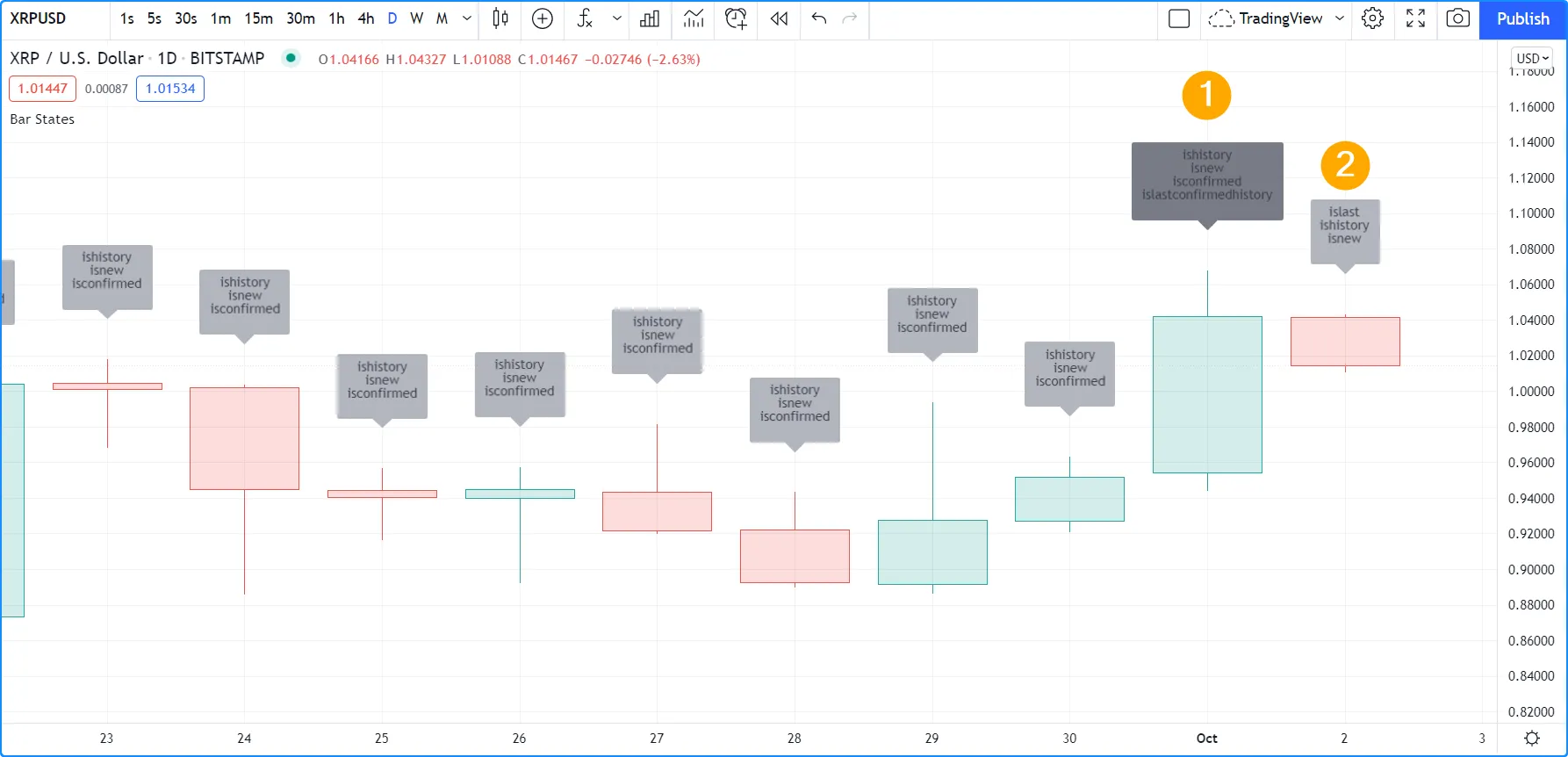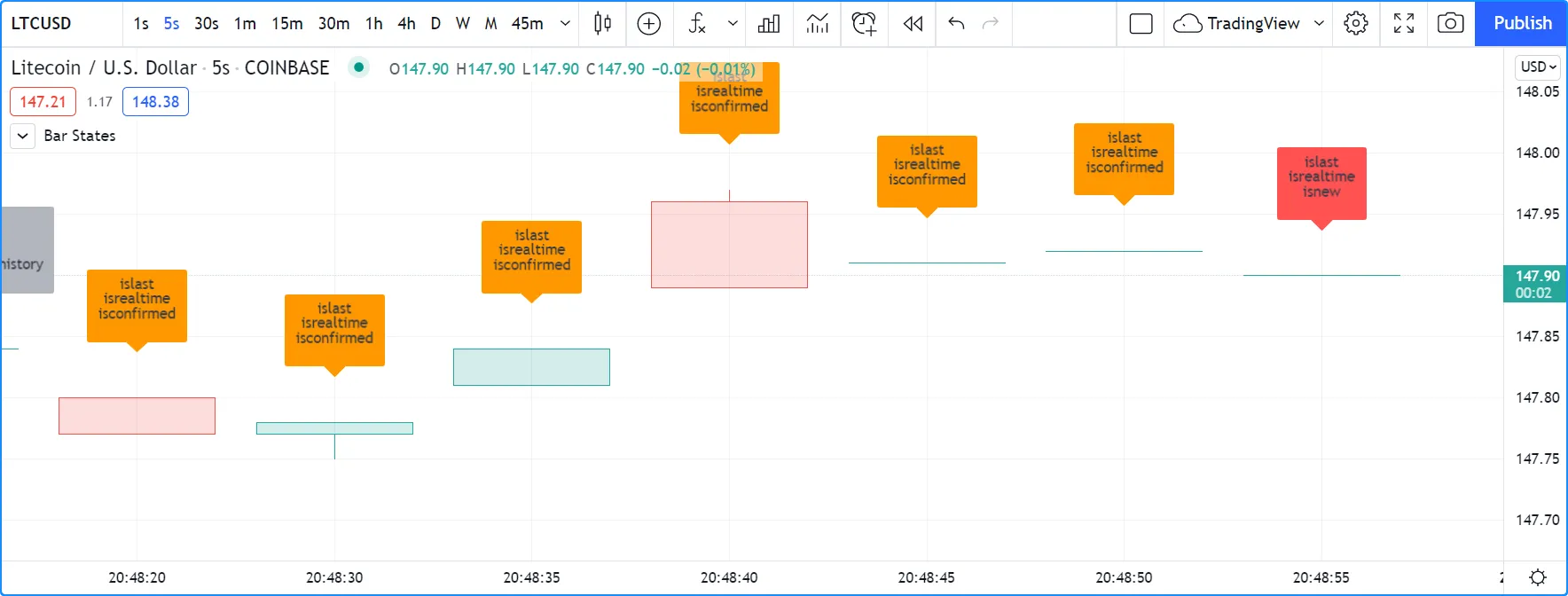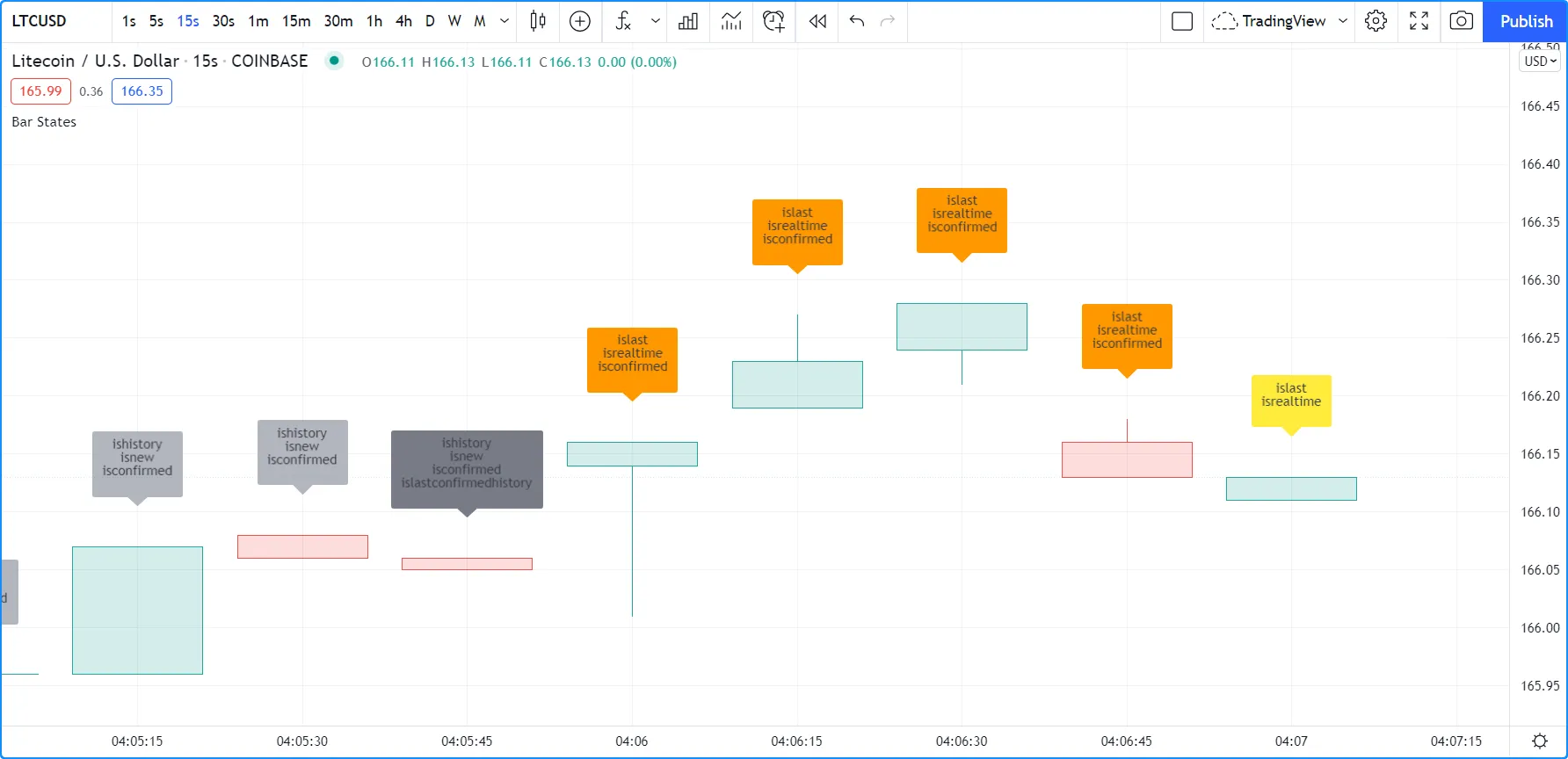Bar states
Introduction
A set of built-in variables in the barstate namespace allow your
script to detect different properties of the bar on which the script is
currently executing.
These states can be used to restrict the execution or the logic of your code to specific bars.
Some built-ins return information on the trading session the current bar belongs to. They are explained in the Session states section.
Bar state built-in variables
Note that while indicators and libraries run on all price or volume
updates in real time, strategies not using calc_on_every_tick will
not; they will only execute when the realtime bar closes. This will
affect the detection of bar states in that type of script. On open
markets, for example, this code will not display a background until the
realtime closes because that is when the strategy runs:
barstate.isfirst
barstate.isfirst
is only true on the dataset’s first bar, i.e., when
bar_index
is zero.
It can be useful to initialize variables on the first bar only, e.g.:
barstate.islast
barstate.islast
is true if the current bar is the last one on the chart, whether that
bar is a realtime bar or not.
It can be used to restrict the execution of code to the chart’s last
bar, which is often useful when drawing lines, labels or tables. Here,
we use it to determine when to update a label which we want to appear
only on the last bar. We create the label only once and then update its
properties using label.set_*() functions because it is more efficient:
barstate.ishistory
barstate.ishistory
is true on all historical bars. It can never be true on a bar when
barstate.isrealtime
is also true, and it does not become true on a realtime bar’s
closing update, when
barstate.isconfirmed
becomes true. On closed markets, it can be true on the same bar
where
barstate.islast
is also true.
barstate.isrealtime
barstate.isrealtime
is true if the current data update is a real-time bar update, false
otherwise (thus it is historical). Note that
barstate.islast
is also true on all realtime bars.
barstate.isnew
barstate.isnew
is true on all historical bars and on the realtime bar’s first
(opening) update.
All historical bars are considered new bars because the Pine Script® runtime executes your script on each bar sequentially, from the chart’s first bar in time, to the last. Each historical bar is thus discovered by your script as it executes, bar to bar.
barstate.isnew
can be useful to reset
varip
variables when a new realtime bar comes in. The following code will
reset updateNo to 1 on all historical bars and at the beginning of
each realtime bar. It calculates the number of realtime updates during
each realtime bar:
barstate.isconfirmed
barstate.isconfirmed
is true on all historical bars and on the last (closing) update of a
realtime bar.
It can be useful to avoid repainting by requiring the realtime bar to be
closed before a condition can become true. We use it here to hold
plotting of our RSI until the realtime bar closes and becomes an elapsed
realtime bar. It will plot on historical bars because
barstate.isconfirmed
is always true on them:
barstate.isconfirmed will not work when used in a request.security() call.
barstate.islastconfirmedhistory
barstate.islastconfirmedhistory
is true if the script is executing on the dataset’s last bar when the
market is closed, or on the bar immediately preceding the realtime bar
if the market is open.
It can be used to detect the first realtime bar with
barstate.islastconfirmedhistory[1], or to postpone server-intensive
calculations until the last historical bar, which would otherwise be
undetectable on open markets.
Example
Here is an example of a script using barstate.* variables:
Note that:
- Each state’s name will appear in the label’s text when it is
true. - There are five possible colors for the label’s background:
- fuchsia on the first bar
- silver on historical bars
- gray on the last confirmed historical bar
- orange when a realtime bar is confirmed (when it closes and becomes an elapsed realtime bar)
- red on the realtime bar’s first execution
- yellow for other executions of the realtime bar
We begin by adding the indicator to the chart of an open market, but before any realtime update is received. Note how the last confirmed history bar is identified in #1, and how the last bar is identified as the last one, but is still considered a historical bar because no realtime updates have been received.

Let’s look at what happens when realtime updates start coming in:

Note that:
- The realtime bar is red because it is its first execution, because
barstate.isnewistrueandbarstate.ishistoryis no longertrue, so our switch structure determing our color uses thebarstate.isnew => color.redbranch. This will usually not last long because on the next updatebarstate.isnewwill no longer betrueso the label’s color will turn yellow. - The label of elapsed realtime bars is orange because those bars were
not historical bars when they closed. Accordingly, the
barstate.ishistory => color.silverbranch in the switch structure was not executed, but the next one,barstate.isconfirmed => color.orangewas.
This last example shows how the realtime bar’s label will turn yellow after the first execution on the bar. This is the way the label will usually appear on realtime bars:
